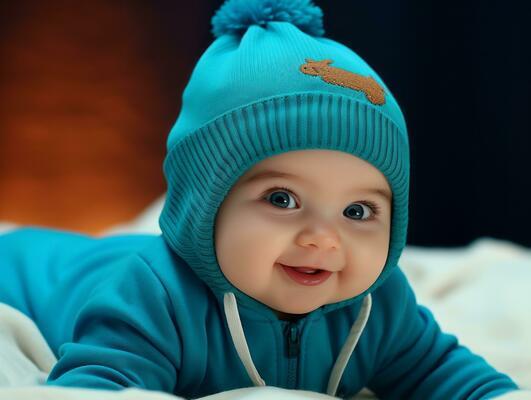Changing a baby boy’s diaper can feel like a high-stakes game of chance—one moment everything is calm, and the next, you’re caught in a surprise spray of pee! While it may seem daunting, with a few helpful tips and tricks, you can master the diaper-changing process without getting caught in the crossfire. In this article, we’ll share practical advice on how to change your little one’s diaper swiftly and safely, keeping both you and your baby comfortable. From preparation to execution, we’ll equip you with the knowledge to turn diaper changes into a breeze, so you can focus on what truly matters: bonding with your little boy and ensuring his happiness. Let’s dive in and make diaper duty a little less daunting!
Understanding the Unique Challenges of Diaper Changing for Baby Boys
Changing a baby boy’s diaper can be a uniquely challenging task, especially for new parents. Unlike their female counterparts, baby boys may have a tendency to surprise you with sudden bursts of urine during the changing process. This is not only common but can also lead to unintended messes if you’re not prepared. Understanding the mechanics of the male anatomy and the psychological triggers that can lead to a bathroom surprise is essential to mastering the art of diaper changing without getting wet.
To help mitigate the risk of being caught off-guard, consider these **preventive strategies**:
- **Cover Up**: Always keep a wipe or burp cloth handy to cover your little one’s genitals while you change the diaper. This simple step can create a barrier that helps minimize unexpected sprays.
- **Timing is Key**: Try to change your baby’s diaper after feedings or extensive playtime, when they are less likely to have a full bladder.
- **Engage and Distract**: Use toys, songs, or funny faces to distract your baby during the diaper change, which can help keep them calm and less likely to surprise you.
Additionally, employing the right technique can further reduce the chances of being peed on. Here are some **best practices** to follow:
| Technique | Description |
|---|---|
| Diaper Positioning | Ensure the new diaper is in place before you remove the dirty one, allowing for a quick swap. |
| Quick Change | Practice swift and efficient movements to minimize the time the diaper is off. |
| Stay Calm | Your demeanor can influence your baby’s behavior; staying calm can help make the process smoother. |
Setting Up Your Changing Station for Success
Creating a successful changing station means setting the stage for quick and efficient diaper changes while minimizing potential mishaps. Begin with a **dedicated space** that is both safe and comfortable for your little one. A sturdy changing table or pad is essential, but also ensure you have easy access to supplies. **Organize your essentials** so that everything is within reach, reducing the time your baby spends exposed during the change.
Consider incorporating a **diaper caddy** or storage bins to keep items neatly organized. Here’s what to include in your setup:
- Diapers in multiple sizes
- Wipes or a damp cloth
- Diaper cream for prevention of rashes
- Change of clothes for emergencies
- Hand sanitizer for quick clean-ups
- Disposal bags for used diapers
Additionally, creating a distraction can be a game-changer during diaper changes. Place a **small toy** or a mobile above the changing area to keep your baby entertained. This not only helps in keeping their focus away from the process but also allows you to maintain a calm environment. Here’s a simple layout to visualize your changing station:
| Station Item | Purpose |
|---|---|
| Changing Pad | Safe and comfortable surface |
| Diapers | Essential for every change |
| Wipes | For cleansing baby’s bottom |
| Diaper Cream | Protects against rashes |
| Toy | Distraction during changes |
Mastering the Art of Quick Diaper Changes
When it comes to diaper changes, speed and efficiency are key—especially if you’re changing a baby boy’s diaper. **Preparation is essential**. Have everything you need at arm’s reach: fresh diapers, wipes, and a changing mat. Lay out your supplies before you begin, so you can minimize the time your little one is exposed. Additionally, a clean, brightly colored changing mat can engage your baby’s attention, making the process smoother. Remember to keep a cloth or small towel handy; this will help shield you from unexpected sprays.
Another strategy involves the **timing of the diaper change**. If you know your baby tends to pee during changes, consider changing diapers right after meals or naps when they are less likely to be in the mood. You can also **use a distraction**—a special toy or a song can keep their focus off the change process and on something enjoyable for them. Furthermore, laying a wipe across their stomach can help catch any surprise pees before they reach you.
mastering quick diaper changes comes down to **practice and patience**. Don’t be afraid to experiment with different positions or methods that work best for you and your baby. Here’s a simple table to summarize some useful tips for quick changes:
| Tip | Description |
|---|---|
| Prepare Ahead | Have all supplies ready in advance to cut down on change time. |
| Pick Your Moment | Change right after meals or naps to reduce likelihood of peeing. |
| Distraction is Key | Use toys or songs to keep your baby entertained during the change. |
Effective Techniques to Prevent Surprise Sprinkles
One of the most effective techniques is to always be prepared for the unexpected. **Keep a cloth or diaper wipe handy** as a shield while you change your little one. When you remove the current diaper, quickly cover the baby’s lower half with the clean cloth, which can act as a protective layer against any surprise sprinkles. This simple step can keep you dry and make the changing process a lot more pleasant.
Another useful tip is to engage in a quick diversion to distract your baby during the process. **Use toys, rattles, or even your voice** to keep their attention focused away from the diaper change. Singing a familiar song or making silly faces can bring a smile and a giggle, which not only entertains but also minimizes the chance of a spontaneous urination as they are caught up in the fun!
consider trying the “cold air” method. **After removing the diaper, expose the baby’s bottom** to a little cool air before reaching for the new one. The sudden change in temperature often prompts babies to take care of business right away, reducing the chances of unexpected sprinkles during the actual change. Just be ready to place the new diaper quickly or cover them again, as this can be a little unpredictable!
Q&A
Q&A: How to Change a Baby Boy’s Diaper Without Getting Peed On
Q1: Why do baby boys tend to pee during diaper changes?
A1: Baby boys often pee during diaper changes due to a natural reflex. The exposure to cool air or a change in position can trigger them to relieve themselves. It’s a common occurrence, so don’t be surprised if it happens!
Q2: What are some strategies to minimize the chance of getting peed on?
A2: Here are a few effective strategies:
- Cover the area: Keep a cloth or a wipe handy to cover your baby’s penis while you’re changing the diaper. This acts as a shield and can help prevent surprise sprays.
- Change quickly: Have all your supplies ready before you start the change. A quick and efficient change reduces the time for any unexpected accidents.
- Keep the baby warm: If it’s cold in the room, warm up a towel or a cloth to cover your baby. Keeping them warm might help reduce the likelihood of them peeing.
Q3: Is it true that some babies pee more than others?
A3: Yes, just like adults, some babies have stronger bladder control and may pee more frequently than others. Each baby is unique, so you may find that your little one has a pattern you can anticipate over time.
Q4: What’s the best position to change a baby boy’s diaper?
A4: A good position is to lay your baby on a changing table or a flat surface with a changing mat. Make sure to keep one hand on your baby at all times for safety. This allows you to change the diaper quickly and securely.
Q5: Are there specific diapering products that can help?
A5: Absolutely! Look for diapers with a high absorbency feature, which can help limit the mess during changes. Additionally, consider using disposable wipes to make the process smoother and cleaner.
Q6: What should I do if my baby does pee on me?
A6: Don’t worry; it happens to everyone! Just take a deep breath, clean up, and change your clothes if needed. It’s all part of the parenting experience, and it provides a great story to share later!
Q7: Any final tips for new parents?
A7: Definitely! Practice makes perfect, so don’t stress too much about the little accidents. Stay calm and patient, and soon you’ll find your own rhythm in changing diapers. And remember, lots of laughter goes a long way – even the messy moments can be fun!
This Q&A should help new parents navigate diaper changes with confidence and ease while avoiding unwanted surprises!
Concluding Remarks
changing a baby boy’s diaper can be a rewarding experience, especially when you’re equipped with the right techniques to avoid unexpected showers! By following the tips outlined in this article—such as using a changing pad, keeping wipes handy, and mastering the art of the diaper cover—you can navigate diaper changes with confidence and ease. Remember, practice makes perfect, and soon you’ll be a pro at tackling diaper duty while keeping both you and your little one dry. Embrace this special time with your baby; it’s all part of the joyful journey of parenthood. Happy changing!


